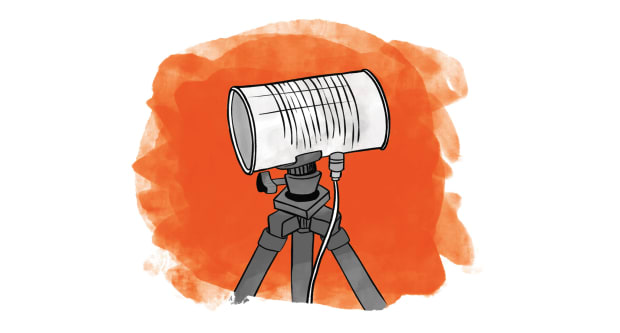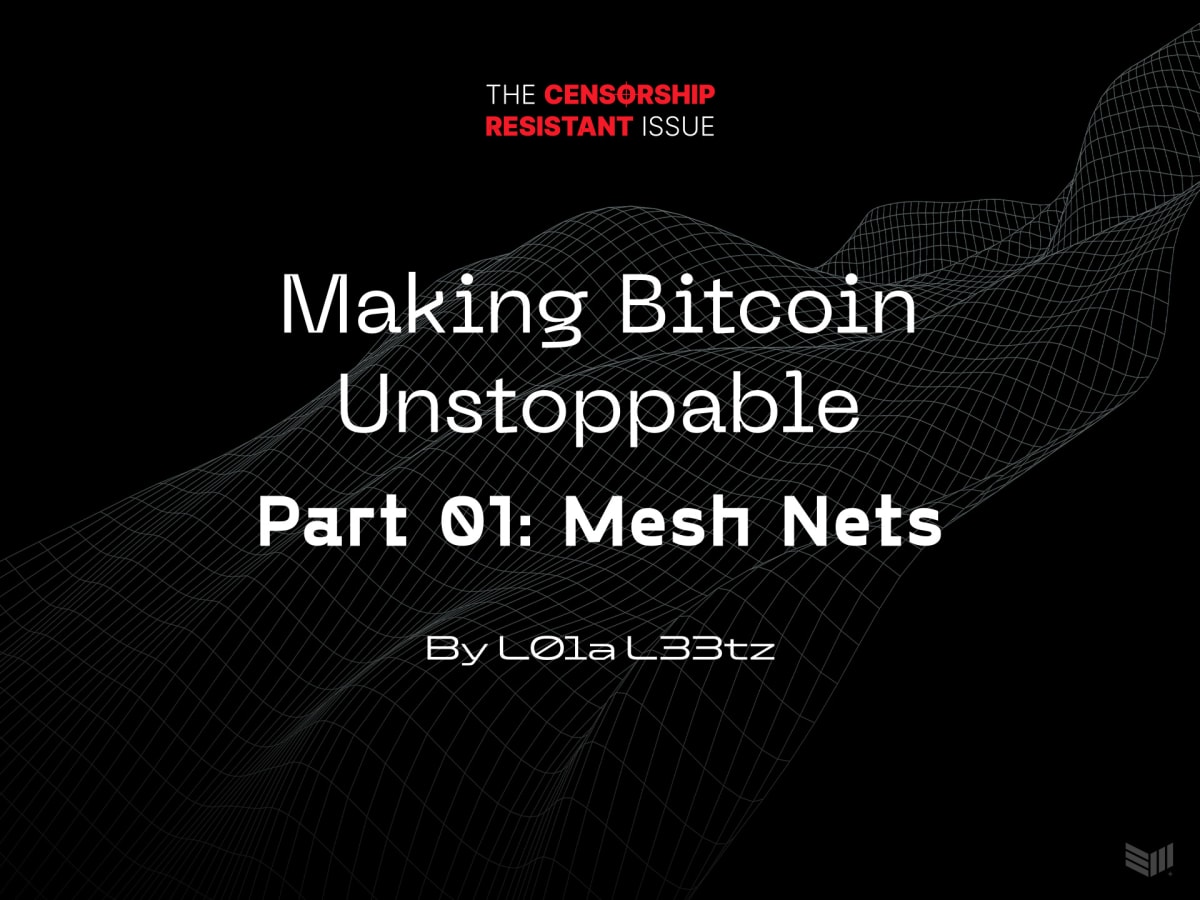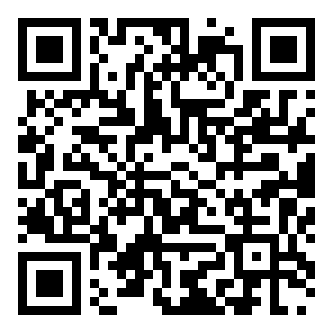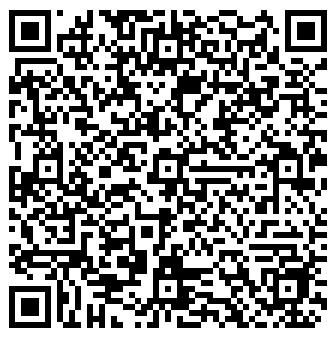Blogs & Articles: Making Bitcoin Unstoppable Part One: Mesh Nets 🔗 2 years ago

- Category: Blogs & Articles | Bitcoin Magazine: Bitcoin News, Articles, Charts, and Guides
- Author(s): L0la L33tz
- Published: 21st July 2022 17:26
It’s time we stop asking for permission. Build a mesh net and make Bitcoin unstoppable.
This article originally appeared in Bitcoin Magazine's "Censorship Resistant Issue." To get a copy, visit our store.
In June 2020, people in Ethiopia faced an unpleasant surprise; following unrest caused by the killing of musician and activist Hachalu Hundessa, the Ethiopian government successfully ordered a shutdown of the internet. For close to a month, over 100 million people were cut off from all internet services.
In the same year, people of Algeria, Azerbaijan, Bangladesh, Belarus, Burundi, Chad, Cuba, the Democratic Republic of Congo, Ecuador, Egypt, Guinea, India, Iraq, Iran, Jordan, Kenya, Kyrgyzstan, Mali, Myanmar, Pakistan, Sudan, Syria, Togo, Turkey, Vietnam, Venezuela and Yemen faced imposed internet access outages in some or all parts of the country.
In 2021, Uganda ordered a complete internet shutdown for four days during its general elections. After elections in Niger, authorities responded to anti-government protests by shutting off access to the internet for ten days. In Jammu and Kashmir, people faced an internet blackout imposed by government decree lasting for 500 days, from the 4th of August 2019 until the 5th of February 2021. In Myanmar, internet access has been shut down for a broad part of the population since 2019, as the military junta whitelists companies and institutions while restricting access for everyone else. In the Ethiopian region of Tigray, internet access has been shut off since November 2020.
As government opposition parties held rallies in Harare, Zimbabwe, in March 2022, internet access via the government-owned internet service provider (ISP) TelOne was throttled, causing numerous outages of services across the country. During planned protests in July 2020, internet access via TelOne was throttled to an unusable degree for 19 hours. Amid fuel price protests in 2019, almost all of Zimbabwe was cut off from accessing internet services for close to two days.
In Burkina Faso, following military uprisings in January 2022, access to mobile internet was cut off for 35 hours, the third shutdown within months, and the second shutdown of the year. After the shooting of protesters in November 2021, mobile internet access, which is the primary source of internet access in Burkina Faso, was cut off for four days.
The Carnegie Endowment for International Peace has reported 196 incidents of internet shutdowns and access limitations in 2018, 213 incidents in 2019, and 155 in 2020. In a report titled “The Return of Digital Authoritarianism: Internet Shutdowns in 2021”, the non-profit digital rights organization Access Now reported 182 internet shutdowns across 34 countries in 2021.
“The Syrian regime was aware, since the beginning of the demonstrations in 2011, that one of the most important steps that its security and military forces must take to suppress any demonstration or peaceful movement is to cut off communications from the crowds, and to stop the movement of news and information flow” (source: https://www.enabbaladi.net/archives/93312# )
Shutting down access to the internet is a viable solution to control social uprisings and limit the flow of information both in and out of certain regions. When people cannot communicate, attempts to organize become close to impossible. Contrary to popular assumption, shutting down access to the internet is a fairly simple task for governments to accomplish. Though we like to think of the internet as a global, decentralized network of individual computers, the reality is that the majority of our internet access is handled via these ISPs subject to government mandates.
ISPs operate in fixed locations, centralizing the internet access of entire countries in very few places, providing a single point of failure in the face of both national and international adversaries. Due to this centralization, internet access in conflict zones can, quite literally, be bombed or threatened out of existence. After a Saudi-led airstrike in the Aden region of Yemen in January 2022, which severed connectivity to the FALCON international cable, the country faced a nation-wide internet blackout that lasted for close to four days. As Israel launched targeted bombings on telecommunications infrastructure in the Gaza strip in May 2021, internet access for much of the population was disrupted for over 10 days. In the West Bank, Israeli forces have previously shut down internet access by simply walking into ISP offices and demanding the disruption of the network.
In 2011, with the beginning of uprisings against the Syrian government, Bashar Al-Assad’s regime cut off internet access via decree, and shortly after began bombing telecommunications infrastructure to prohibit its use indefinitely. In a desperate move, Syria’s opposition led interim government quite literally imported internet access from bordering countries via optical links, such as Turkey. But, as Turkish forces began operating in the Afrin region, Turkey, too, cut off communication services for the entire Northern region of Syria.
While Bitcoin, being a low-bandwidth network, can function perfectly well without the internet, the possibilities of transacting bitcoin without an internet connection are little studied and even less documented. Most solutions to interact with the Bitcoin network depend on an internet connection, presenting no viable option for anyone living in regions affected by hostile governments prone to severing access — that is, if the internet is even available in the first place.
In Eritrea, internet penetration lies around 8% — in South Sudan, it’s 10.9%. Somalia and Burundi have internet access rates of under 15%. In North Korea, access to the internet lies at 0.1%, while the entire continent of Africa has an overall internet coverage of only 22%. The reasons for little-to-no internet penetration vary. In some cases, as in North Korea, governments are simply not interested in permitting citizens to access internet services in order to control the flow of information. In others, as in Zimbabwe, internet access is prohibitively expensive, lying at around $300 per month for non-mobile access; equating to a household’s monthly median income. Mobile internet on the other hand lies at around $60 per 30GB, but often disappears before one could possibly spend 30GB of data, hinting at corruption and meddling in data sales.
In the Western world, we like to live in the comfort of knowing that our rights are protected by relatively stable governmental structures. In the Universal Declaration of Human Rights, the right to access information falls under the right to freedom of expression; permitting individuals to have the right to hold opinions and express them freely without government interference or regulation. Many countries, such as the United States, have included such rights in their own laws, such as under the First Amendment, which declares freedom of speech. But if a government falls hostile, rights are not enough if we cannot enact them ourselves. If we are serious about utilizing Bitcoin as a tool to enforce human rights around the globe, we must concern ourselves with the consequences of accessing a decentralized monetary network via inherently centralized infrastructure.
The Internet Is Dead, Long Live The Internet
When it comes to the decentralization of internet access, there is an important lesson to be learned following Russia’s invasion of Ukraine in February 2022. While Russia targeted Ukrainian telecommunications infrastructure through shelling and cyberattacks, Ukraine found itself in a unique position with the fourth most decentralized telecommunications grid in the world. As the internet watchdog organization Netblocks recorded cyberattacks on Ukrainian ISP Ukrtelecom, dropping nation-wide connectivity down to only 13%, Kyivstar, another ISP, managed to provide internet access to over two hundred bomb shelters. Having numerous ISPs removes possible choke points in internet access; if one provider fails, another can pop up, and any attempt of severing connectivity turns into a game of whack-a-mole.
Yet, Olga Ukolova, co-founder of Zug, Switzerland based Pandora Prime and Head of Operations at the LNP/BP Standards Association delivering Bitcoin second- and third-layer technologies such as RGB and Bitfrost, saw herself cut off from communicating with her family in Mariupol – a fate suffered by thousands of expats living outside of Ukraine at the time of invasion. Even in a country with an extremely high level of decentralization in communications such as Ukraine, people could simply be cut off from communicating. But what if we could decentralize internet access even further, by having every node in a network act as a potential ISP?
Enter: mesh networks.
Many believe the internet to be one network which connects millions of computers around the world. But, in fact, the internet is a network of networks. Today, there are an estimated 40,000 different networks, closely interconnected, which make up what we know as the internet. The good news is that there is nothing that can stop us from launching our own internet network. The most commonly known alternative internet networks are Intranets. An intranet is a local network used to facilitate communication within a specific group of people, allowing for the controlled access of information. Intranets are usually reachable via Local Area Network (LAN) cables, or via the broader internet through Virtual Private Network (VPN) tunnels. The problem; without physical access to Intranet servers and no connection to the broader internet, Intranets become unreachable.
A mesh network is a form of Intranet in which every node in the network acts as a relay for information. If Alice wants to send a message to Carol, but has no direct connection due to being physically out of reach, Bob can relay the message between them. On a broader scale, when Alice wants to send a message to Zach, their message can be relayed via Bob, Carol, David, Eric and so on and so forth, until the message to be sent has reached its destined recipient.
In times of social unrest and government crackdowns, mesh networks offer a lifeline to uphold communication. During pro-democracy protests in Hong Kong in 2014 and 2019, protesters turned to mesh networking alternatives to send and receive messages with the Android and iOS apps Firechat and Bridgefy to circumvent possible internet shutdowns. Building connections via Bluetooth, messages are relayed via each participant in the network. Meshing via Bluetooth has its issues, as most apps do not encrypt traffic; a problem which the mobile app Briar is aiming to solve. Another issue is battery usage. Bluetooth is extremely power hungry, making usage unfit for regions where electricity is difficult or expensive to come by.
Some companies such as GoTenna have focused on designing dedicated devices for mesh networking. The problem here is that in the middle of a conflict, one cannot simply go on Amazon and order a dedicated mesh networking device. Dedicated devices also are often not interoperable with other mesh networking devices. To build a nation-scale mesh network with dedicated devices, every citizen would need to be in possession of a dedicated device — a scenario that is highly unlikely. Other projects, such as LoraWan’s Meshtastic, can be built via off-the-shelf hardware, but again are subject to the pain point of needing to have access to such metaphorical shelves in a situation of urgent need.
The good news is that there is absolutely no need to operate mesh networks on dedicated devices. With the Linux distribution OpenWRT, a software allowing the easy customization of the basic firmwares of computers, most regular internet routers can simply be turned into fully functioning mesh networking devices. Open WiFi communities around the world build software to function on top of OpenWRT, such as Berlin Freifunk’s Falter software. This allows regular internet routers to act as relay nodes for information and internet access in the network; the benefit here being that anyone can begin operating a mesh network based on the tools they already have at home.
Running Bitcoin Through Tomato Cans

In a mesh network, participants can choose to share their access to the broader internet with other nodes in the network. If Alice still has a connection to the broader internet via her ISP, she can share her internet access with Bob, Carol, David and so on, as long as they all operate on the same mesh network together. Sharing internet access via mesh networks is a viable solution if internet access is restricted or disturbed in certain parts of the country. For this, the mesh network needs a functioning backbone.
A backbone in a mesh network is built via directional antennas. While regular internet routers only have a signal range of about 50 m, this signal can be extended up to 80 km with an antenna which beams the signal across a distance. The easiest way to build the backbone of a mesh network is via off-the-shelf hardware. For this, Alice sets up a directional antenna on the top of a high building, and tells Bob, to whom she wants to beam her signal, to do the same. But as we’ve learned, off-the-shelf hardware is not always an option. In this case, with a little know-how, directional antennas can also be built with regular cans — such as tomato cans. The can is then connected to a mesh networking router via an antenna cable, and “ta-da”, we have built ourselves a functioning directional cantenna.
Alice and Bob can now also choose to provide access to the internet in their communities. Anyone in close enough range of the mesh networking node can then access the internet with any WiFi-enabled device, just as if they were connecting to any other WiFi network. As long as an uplink to the broader internet exists within the mesh network, anyone connected to the mesh network can send and receive bitcoin transactions on-chain as well as over the Lightning Network. But what if all uplinks to the broader internet are destroyed or disturbed? To continue to send bitcoin transactions on-chain, Alice can set up a Blockstream satellite, which receives information from the Bitcoin blockchain. Alice can then feed the Blockchain data received via the Blockstream satellite into the mesh network, so that anyone connected to the mesh network can continue to receive on-chain bitcoin transactions, even without an uplink to the broader internet.

But what if no Blockstream satellite exists within a mesh network, or satellite transmission is disrupted due to cyberattacks, bombings or bad weather? Without access to the Bitcoin blockchain, on-chain bitcoin transactions cannot be received. The only options are to fork the Bitcoin network, which comes at obvious consequences, or to rely solely on sending and receiving bitcoin via the Lightning Network. In fact, the modi operandi of mesh networks is similar to how transactions are conducted via the Lightning Network, as nodes relay information between participants. If Alice and Bob have opened a Lightning Network channel between them while still having access to an uplink to the broader internet, it’s possible for them to continue transacting bitcoin freely within those channels even when the uplink goes down, as no need exists for transactions to be settled on-chain.
If we want to utilize mesh networks to send and receive bitcoin transactions via the Lightning Network, it’s best to have opened channels ahead of internet access outages – But Lightning channels could even be opened (and closed) by broadcasting transactions via radio. In a 2017 proposal, Nick Szabo and Eliane Ou detailed the sending and receiving of bitcoin via shortwave radio links, allowing offline bitcoin transactions to be sent over vast distances by bouncing signals off of the ionosphere. In 2021, Brazilian activist group Satoshi.Radio even took it a step further, bouncing a bitcoin transaction containing the message “Elon, we did it first!” off the moon. With this, Satoshi.Radio sent their transaction over 600km before it was broadcast to the blockchain, attempting to “show that you don’t have to be some eccentric billionaire to push the boundaries of earth in search of freedom”, though it has to be noted that sending bitcoin over radio is currently deemed a commercial transaction and therefore restricted under international HAM radio law. (source: https://www.benzinga.com/markets/cryptocurrency/21/06/21425915/elon-we-did-it-first-bitcoin-sent-to-the-actual-moon-by-developer-group )
With a mesh network, we completely decentralize our communication infrastructure, as anyone can become an ISP in the network. Individuals may choose to offer mumble or matrix servers for communication or provide local access to Wikipedia, while open channels in the Lightning Network can be used to facilitate bitcoin transactions without an uplink to the broader internet. Mesh networks are also cost-efficient to deploy as already available hardware can be used to facilitate communication and provide unprecedented benefits for people who live under circumstances susceptible to disruptions of internet access.
As grassroots movements, mesh networks are free from government control. Just as in Bitcoin, there is no single administrative body. There is no service provider whose door could be stormed by adversarial troops, demanding disconnection. There is no central access point that could be targeted by force. If one node in the network goes down, others can bridge the gap that resulted. All of these factors make mesh networks the single most useful communication infrastructure to explore when wanting to transact a decentralized money. In combination with the Lightning Network, there is no one that can disrupt the transfer of bitcoin — but without mesh networks, we stand at the whim of governments to permit us access to the broader internet and facilitate transactions, whether we are aware of this fact or not. If we want Bitcoin to succeed, we must begin to further research, prototype and build our own decentralized communication infrastructure. So please, do try this at home and report your experiences for the rest of the world to see. Because one day we may all depend on sending bitcoin without the internet.
It’s time we stop asking for permission. Build a mesh net. Make Bitcoin unstoppable.












